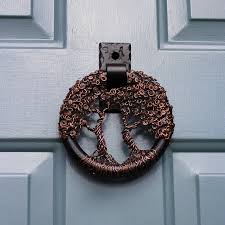
Knock, Knock
Who’s there?
Al
Al who?
Al give you a kiss if you help me break through this brick wall!
Yes, that is truly a dumb knock-knock joke but it makes me think of what I’d do if I was able to identify some folks by their given names.
Who’s Al? Is he Alvin, Albert, Alfie, Alexander, Alexa, Alfred or someone else entirely? Although Al typically is a male name, I’ve known a female that used it.
Why do we even use nicknames? Wickipedia states hypocoristic, a synonym of nickname, is an “affection between those in love or with a close emotional bond, compared with a term of endearment.”
I completely understand the use of endearments but nicknames cross over into the public realm and for genealogists, can be a nightmare! I speak for myself; Lori is my nickname. Why my parents didn’t place that name on my birth certificate I don’t understand. I asked! The response was, “I don’t know.” Geez. My formal name wasn’t a family name so there was no reason they couldn’t have. My mom said she was going to name me Patty, after her friend, but when I arrived I didn’t look like a Patty and my birth certificate name just came to her. Wonderful! She never could explain to me what a Patty looked like.
I seriously considered even getting my name legally changed a few years ago when government requirements tightened and I had difficulty proving who I was as none of my legal documents matched. Hubby goes by a nickname, too, but his official records all used the same name so he had no problem. He has successfully kept his nickname out of public records.
My problem began before I was out of diapers – my parents applied for a social security card for me using my nickname. I had no problem obtaining work (or paying social security all my working life!) under that name until 10 years ago when the laws changed for license renewal. To beat the system, I had to add “aka” on my bank accounts, mortgage and credit cards and place my birth certificate name on my official records. I’m so paranoid about being identified correctly that when I did my burial pre-planning a few months ago I made sure I included my given and nickname on the document. Problem was, my name is too long so I had to use whiteout and try again. Nothing like a genealogist messing up their own record!
Even though we took great pains to name our children so they wouldn’t have the nickname dilemma, nicknames are now back in vogue. Did you know there are online generators to help you select your own nickname? Who knew! Reasons for giving yourself a nickname are because you think your birth name is boring, there are too many people with your given name in your social group and you’re being confused, your name is too long or it’s difficult to pronounce. Some folks are even changing their names as they begin a new life experience. I can only imagine how much fun this will be for future genealogists to correctly identify individuals!
On the flip side, these sites could help you in figuring out the birth name of your brick wall person. Check these out if you’re stuck identifying someone in your family tree:
1001+ Cool Nicknames
The Origins of 10 Nicknames
Common Nicknames
800+ Nicknames
Nicknames for Boys
Vintage Nicknames for Girls

